
Designing a Garden to Benefit your Mental Health- An Introduction
I’ve noticed a common thread over the past 2 years in the stories you tell me. Time and time again you’ve told me how flowers have brought hope, comfort, joy in hard times. You’ve shared how flowers have joined in your celebrations and how they’ve comforted in times of loss.
Intrinsically I’ve known these things for a long time, but I guess I’ve never connected so much with people over flowers as I have the past 2 years. When you spend as much time outside as I do, you very acutely feel it when you are forced indoors for too long. This acute change is the way I imagine you feel when you first notice the power of flowers.
Flowers have been a life long love and out of that came gardening. I began gardening later in life, about 20 years ago. It began as a hobby- the sheer joy and amazement of seeing a tiny seed turn into a plant!
However over the last 2 years, I’ve realized my garden is my sanity. I love the reward of a good harvest. But the journey from seed to harvest has become the more fascinating part.
I’m very goal oriented and for years I was always working hard to accomplish the goal and then move on to the next thing. But I’ve begun to see how much I miss when I overlook the journey; I fail to stop along the way and notice the small milestones. I recently heard farming described as “the work of a lifetime”. Gardens are this way too, they are never truly finished.
I’m endeavoring to see my garden as an evolving world with a life of it’s own. (Because let’s face it— it has a life of it’s own— millions of tiny organisms living within our gardens!)
Through observing the process I’ve begun to see how beneficial the garden is to my mental health. It’s become more than just an escape.
Over the next few weeks, I’d like to share some tips and introduce some ideas to explore so that you can create (or add to) a garden to benefit your mental health.
This series has been brewing in my mind for a long time but I wasn’t quite sure how to approach it. So I decided to think about what our brains need for a healthy mental state. There are a lot of aspects but I’ve chosen a few to discuss in this series. Hope on over to part 1 to begin.
The Dreaded Powdery Mildew
It may not be flashy and sexy but if you grow dahlias you are going to come across powdery mildew sooner or later. This is meant to be the layman’s guide to powdery mildew. If you want to get really geeky, there’s a Google rabbit hole you can go down, I’m sure!
A really bad case of late season Powdery Mildew
What is it?
First off, what is powdery mildew (PM)? It’s a fungus that is characterized by a white powdery growth on the upper leaves of plants. Newer growth and succulent tissues are more susceptible to PM. It can affect pretty much any type of plant however it is host specific. This means that if you see PM on your rose bush, that variety of PM isn’t going to affect your dahlia plant. Why? Because they are in different plant families. Roses are part of the Rosaceae family and Dahlias are in the Asteraceae family. This is handy information to know and helps you figure out how to arrange plants in your garden— what you can plant next to what. A quick google will tell you the plant family for a species.
PM does overwinter in soil so once you have it, you’ll be dealing with it again and again. If you grow dahlias in a hot climate, it’s a given. That’s why prevention is important. I’ve developed some ways to hold it off for a large part of my season. It can kill a plant but I’ve found that if you hold it off long enough, you can usually make it through the season without losing your dahlia. It’s not a death sentence.
What causes it?
There are environmental triggers that cause PM to show it’s ugly face. The biggest factor in a hot climate is hot and dry conditions. Often in early summer, my area goes through a week’s worth of rain (where we all worry about tuber rot) and then we will go dry for 2-3 weeks with very little rain. This period is a perfect example of conditions that powdery mildew loves! Now PM does need humidity in the air to form spores on our leaves however in my hot southern climate, humidity is still a given even during a hot dry period. Our air is naturally humid enough.
Another environmental issue is airflow. PM has to have humidity to form but the humidity around your plants may be higher than what’s in the air above because your plants are closer together. Airflow is insanely important!! This is why you often see hot weather dahlia growers remove the bottom foliage off their plants. Increasing your airflow is key.
Prevention
Once you understand the conditions PM thrives in you can begin to thwart it. A few years ago, I began to use sprinklers in my field as a method of cooling the plants during extremely hot days. During that summer I noticed that my plants got hardly any powdery mildew until later in the season when it was cooler and I didn’t use the sprinklers as much. This led to a bit of research and I learned what I just shared above about PM environmental triggers. Keeping a “rinsing” once a day on the leaves kept the spores from having time to form. So now I set up sprinklers that cover my field in late May. I run them for 20-30 minutes daily. Sometimes a bit longer if we are extremely hot and dry. The sprinklers are the best method I’ve found for PM prevention and it’s rather organic!
Another aspect to note is that certain varieties are more susceptible to PM. Dark leaf dahlias always get it first! Which is a shame because I love dark leaf varieties. I’ve also noticed some varieties have great resistance to it. Looking at you Ice Tea!
Ice Tea Dahlia
Treatment
The old saying of “an ounce of prevention is worth a pound of cure” is most definitely true when it comes to PM. However, you may get to the point where water is not cutting it. There are some tried and true ways to deal with it. Sprayed fungicides are the surest way to deal with PM. However, you do have to spray regularly once you start. I hate having to spray 2000+ plants which is why I’m big on prevention. Copper fungicide is my go to. Whatever you use, apply it according to the directions on the label. Also remember- Don’t spray during the middle of the day. Only spray when it’s not windy and the sun is not directly on your dahlias. I prefer evenings so that the spray has time to absorb into the leaves without any risk of burning.
A few other things- If you see PM on a few leaves, remove them from your plant. Do Not Compost. Dispose of in your trash or remove them from your property. Even with prevention methods, you’ll eventually see a few spots but if you can remove them before they spread, it’ll keep the disease down longer. Scouting your plants regularly is important. That is one side benefit to spraying— you get time to look at your plants!
Also be careful of late season nitrogen fertilizers. You shouldn’t be fertilizing dahlias with nitrogen late in the season anyways, but this applies to other types of plants too. The new growth is especially attractive to PM. If you live in a climate where you cut dahlias back in mid summer, pay close attention to removing your plant debris from your field if you’ve already seen PM that season.
Summer cut back of Rock Run Ashley
Based purely on observation, I do feel like growing dahlias in landscape fabric has slowed the spread of PM too. The fabric blocks the migration of the spores from the soil. However, I do think it’s a good idea to clean your fabric if you re-use it.
Same bed 6-7 weeks later, clean and healthy ready for re-bloom
Winter is a great time for thinking about disease prevention and how to deal with pests. Take this time to get your game plan for a successful dahlia season!
The Best of Lists for 2021
Well I know it’s already 2022 but better late than never right? So here are my ‘best of the best lists’ for 2021. In no particular order:
Bridezilla
Top Producers:
These are the dahlias that produce the most stems and also sell the best for tubers.-AKA- the ones that are the most profitable on my farm. This list is numbered but this is not a ranking order.
1. Blizzard
2. Rock Run Ashley
3. Linda’s Baby
4. Sweet Nathalie
5. Small Burgundy
6. Miss Amara
7. Ice Tea
*Honorable mention goes to Caramel Antique, Wine Eyed Jill and Megan Dean. I grew these for the first time this year but I can see the potential for them to be on this list regularly in future years.
Good Day
Top Tuber Producers:
This list is in ranking order with highest first.
1. Good Day
2. Coseytown Bounty
3. Last Dance and Mingus Toni (tied)
4. Fiona and Hollyhill Finlandia (tied)
5. Honeymoon
6. NTAC Mai Li
7. Bridezilla
8. Blizzard
Linda’s Baby
Top Cut Flowers for Hot Climates
Not in ranking order, just my favorite choices
1. Blizzard
2. Rock Run Ashley
3. Linda’s Baby
4. Bridezilla
5. Beaucon White
6. Miss Amara
7. AC Ben
8. Kenora Lisa
9. Sweet Nathalie
10. Rip City
11. Cafe Au Lait
12. Sonic Bloom
13. Ice Tea
14. Peaches N Cream
Coralie
Varieties I’m excited to trial for next year:
1. I’m looking for some new whites so— Danum Cupid, White Fawn, Cumulus, Gitt’s Attention
2. New Blushes and peaches- Irish D Porter, Clearview Peachy
3. KA Varieties— Finally got my hands on some cuttings of Kristine Albrecht’s varieties -VERY EXCITED!!
4. New Hollyhill Dahlias b/c I’m a big fan of Hollyhill Dahlias- always excellent genetics- HH Cotton Candy, Frodo, and Regal
5. 2nd year trials— These are varieties I grew this year and am keeping for a second year. I’m most excited about Sugartown Sunrise, Coralie, Rose Toscano, Hapet Champagne, and Fiona
Good Day Tuber Clump
Last but definitely not least, I kept track of how long it took to process the tubers this year: (For 2200 plants)
Digging: 39 hours
Washing: 15 hours
Dividing: 75 Hours
Storage: Still going but estimate 15-20 hours
So, do you have any good varieties to tell me about? Send me an email!!
Keep or Cull? 2021 Dahlia Trials Results
In 2021, I conducted the largest dahlia trial I’ve ever done. 120 new (to me) varieties! I was looking for some very specific things but also trying out some fun stuff too. But before I get started here’s some details on the trial.
What I was looking for:
- I needed some new varieties in peach, blush, lavender, and yellow. So you’ll see a lot of those colors here.
- All the trial varieties were grown inside my unheated hoophouse. This particular hoop house has some of the best soil on the property and also I’ve found that being able to control the water supply enables superior tuber growth over field dahlias. (Hoophouse growing has many other challenges for growing dahlias so it’s not all rosy but that’s a post for another day.)
-Hoophouse growing does produce slightly different coloring in the dahlias because the light intensity is reduced so keep that in mind when looking at these pictures.
- I was looking mainly for cut flower varieties.
- Last but definitely not least—- I knew going into this trial that I would have to be ruthless because there is no way I could keep all 110 varieties. So you’ll see some really good stuff on the cull list. This is not meant to say these varieties suck in any way. It’s just they weren’t what I needed for my operation. If you love something on the cull list— Grow It!!
In this post, I’m going to tell you about my top favorites on the keep list and a few on the cull list (and why). There’s a complete keep/cull list at the bottom and hopefully this winter I’ll have time to write about these more in depth.
To Keep:
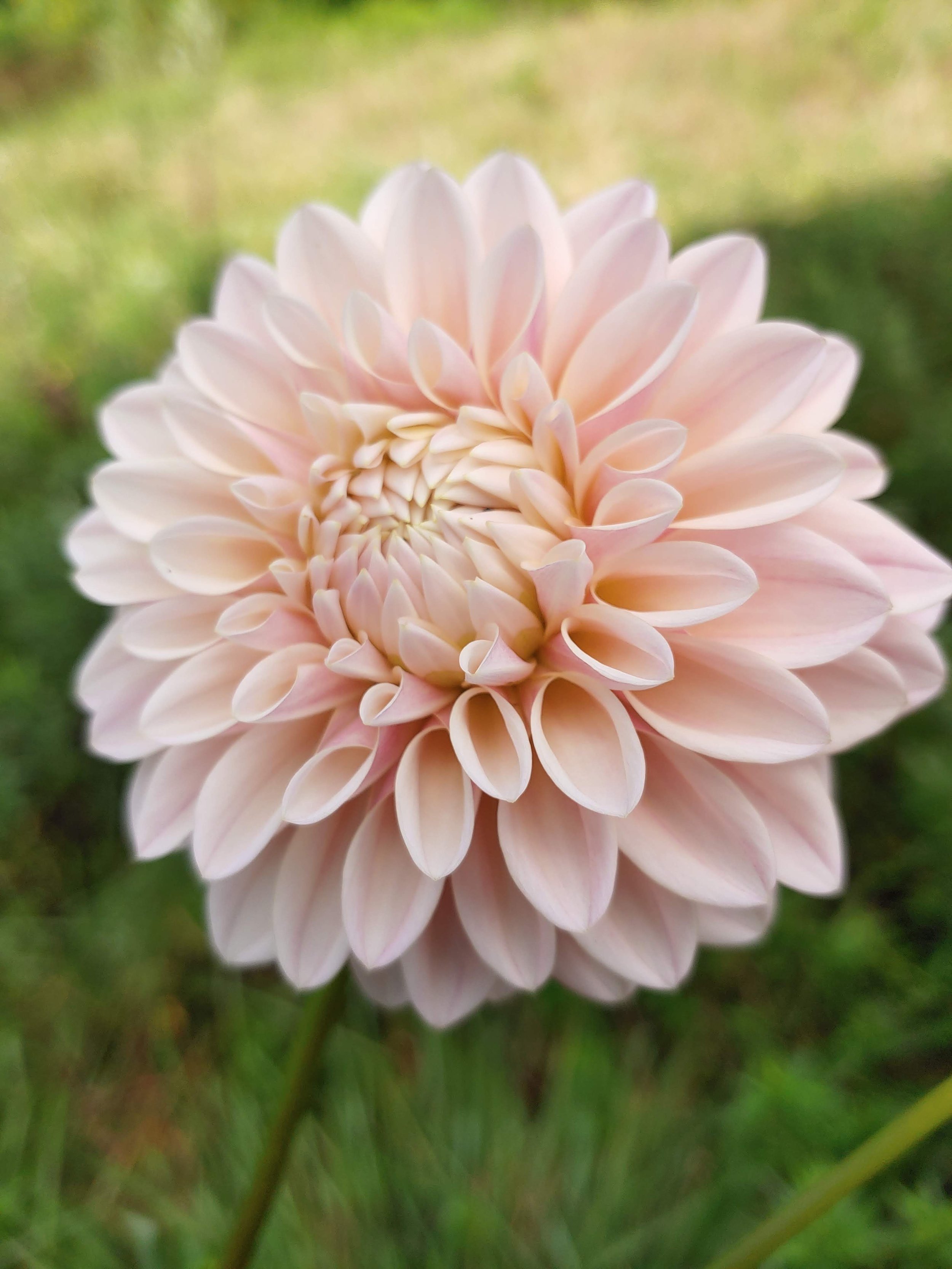

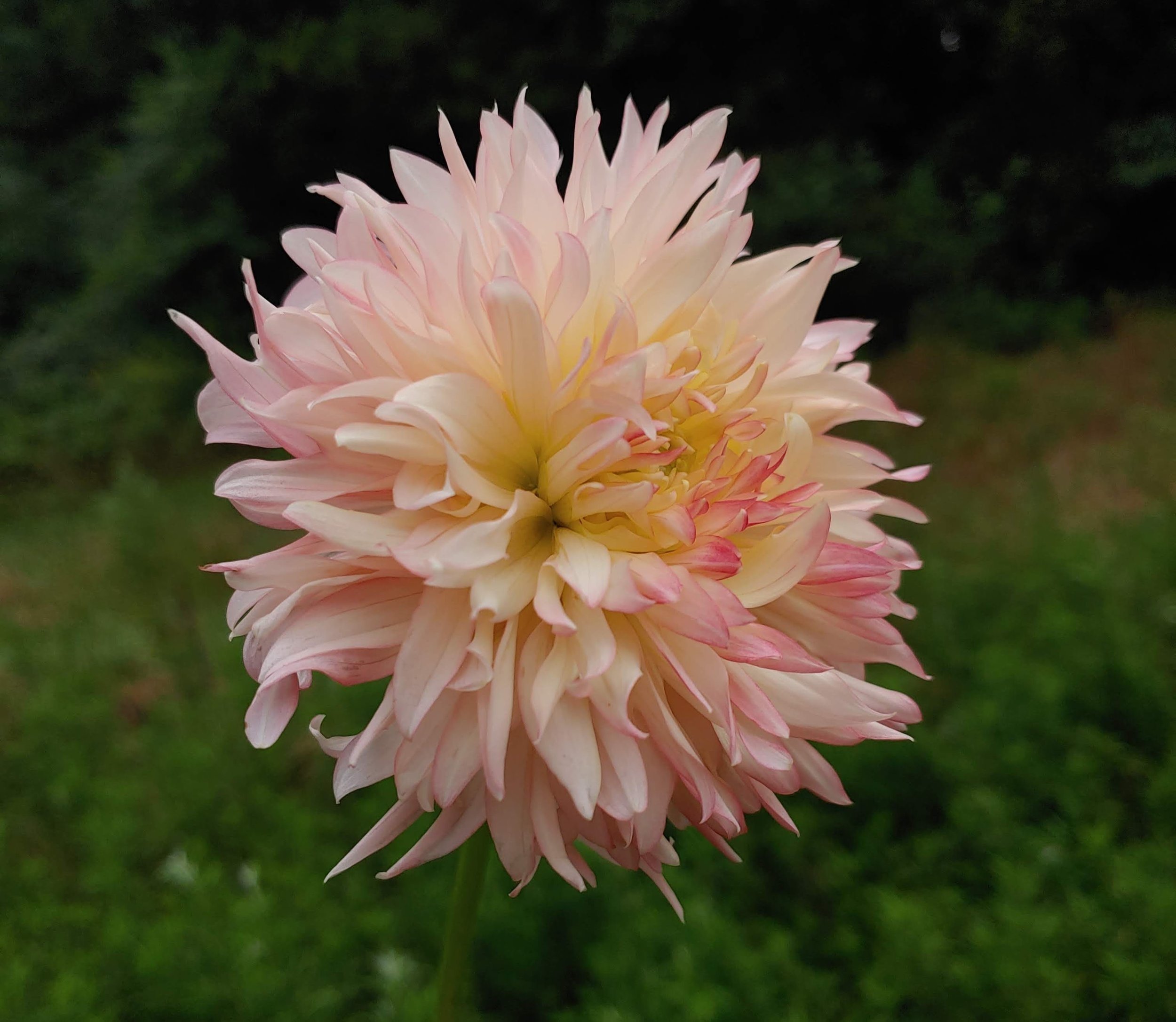
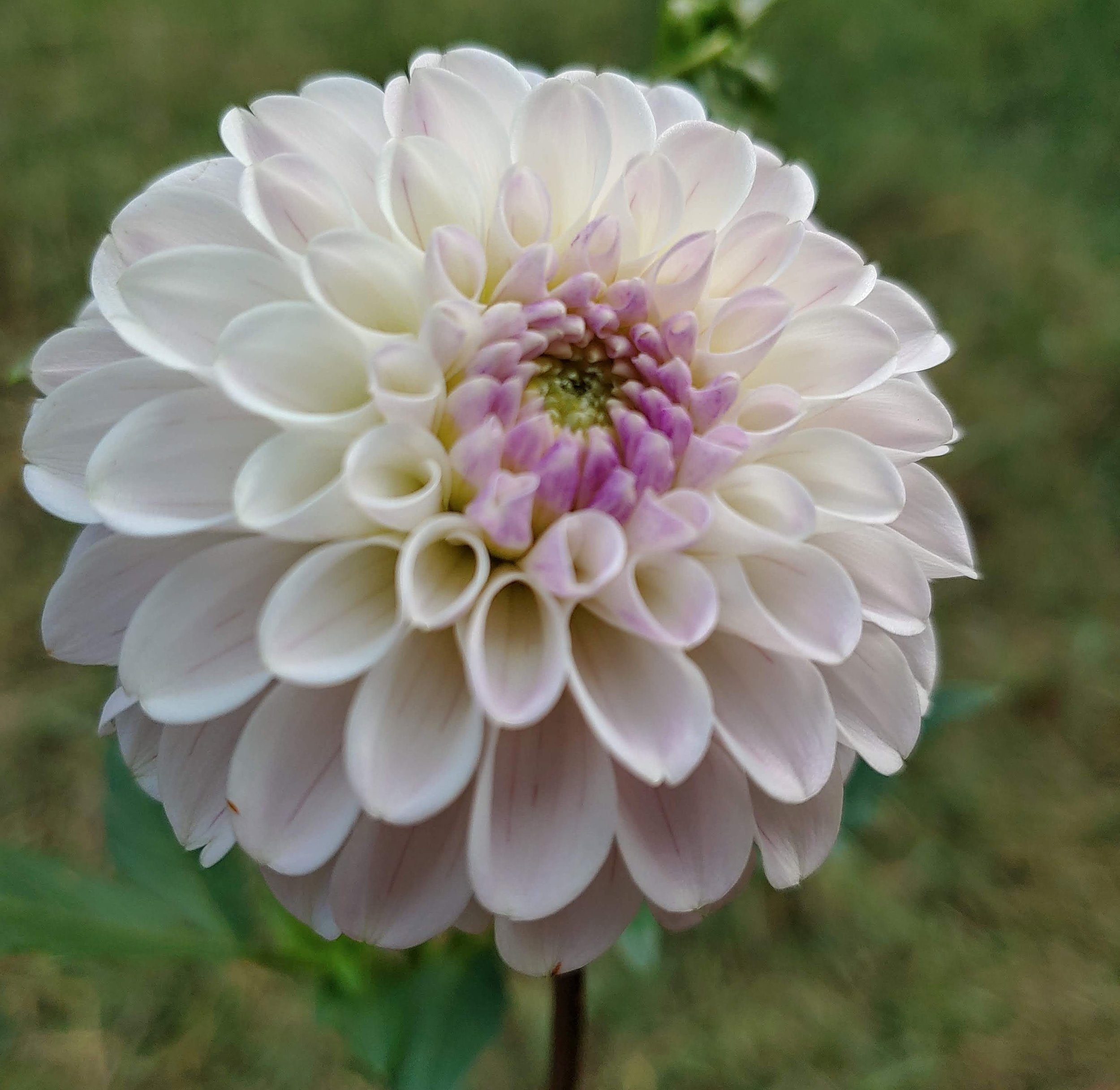
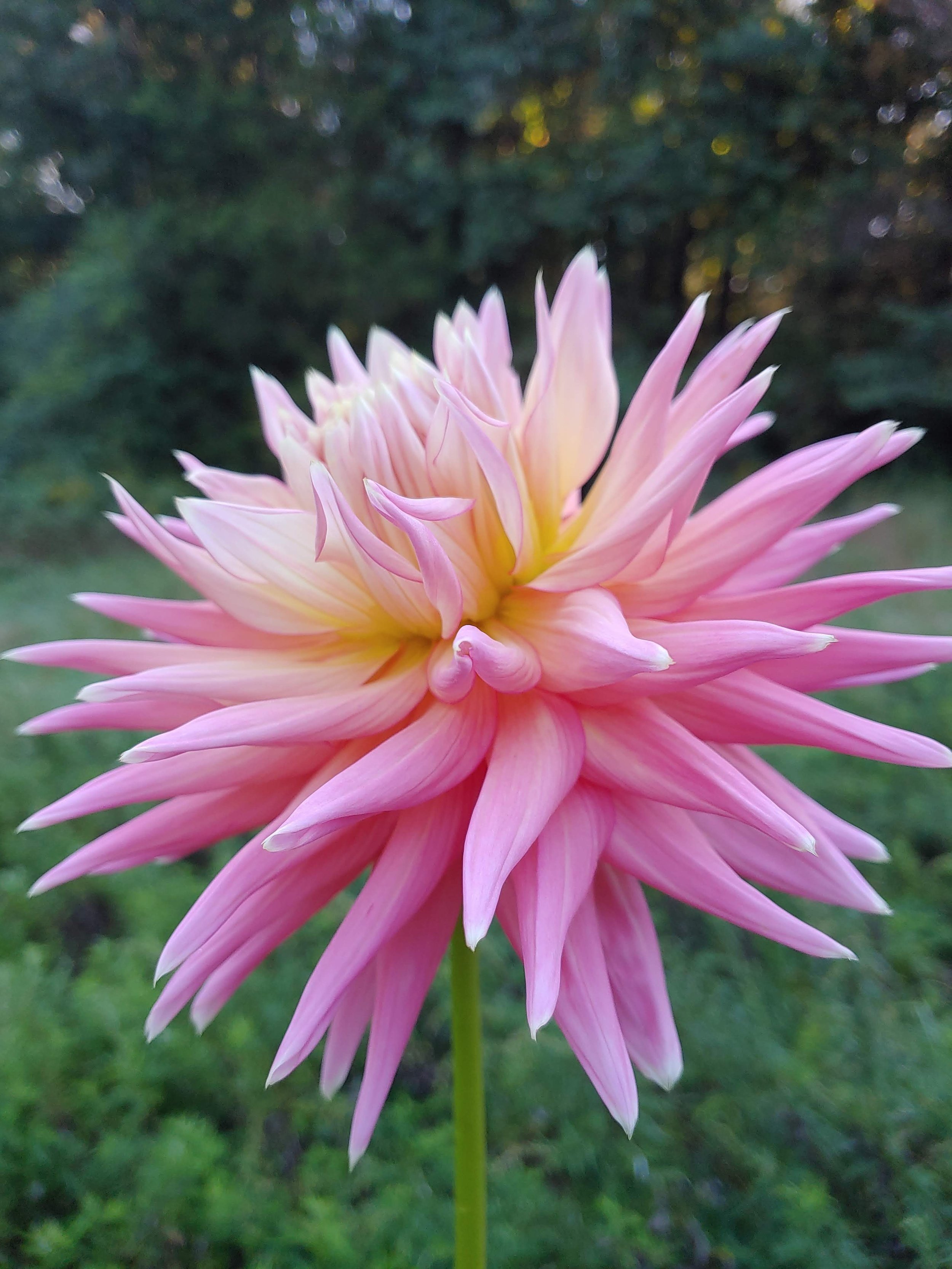
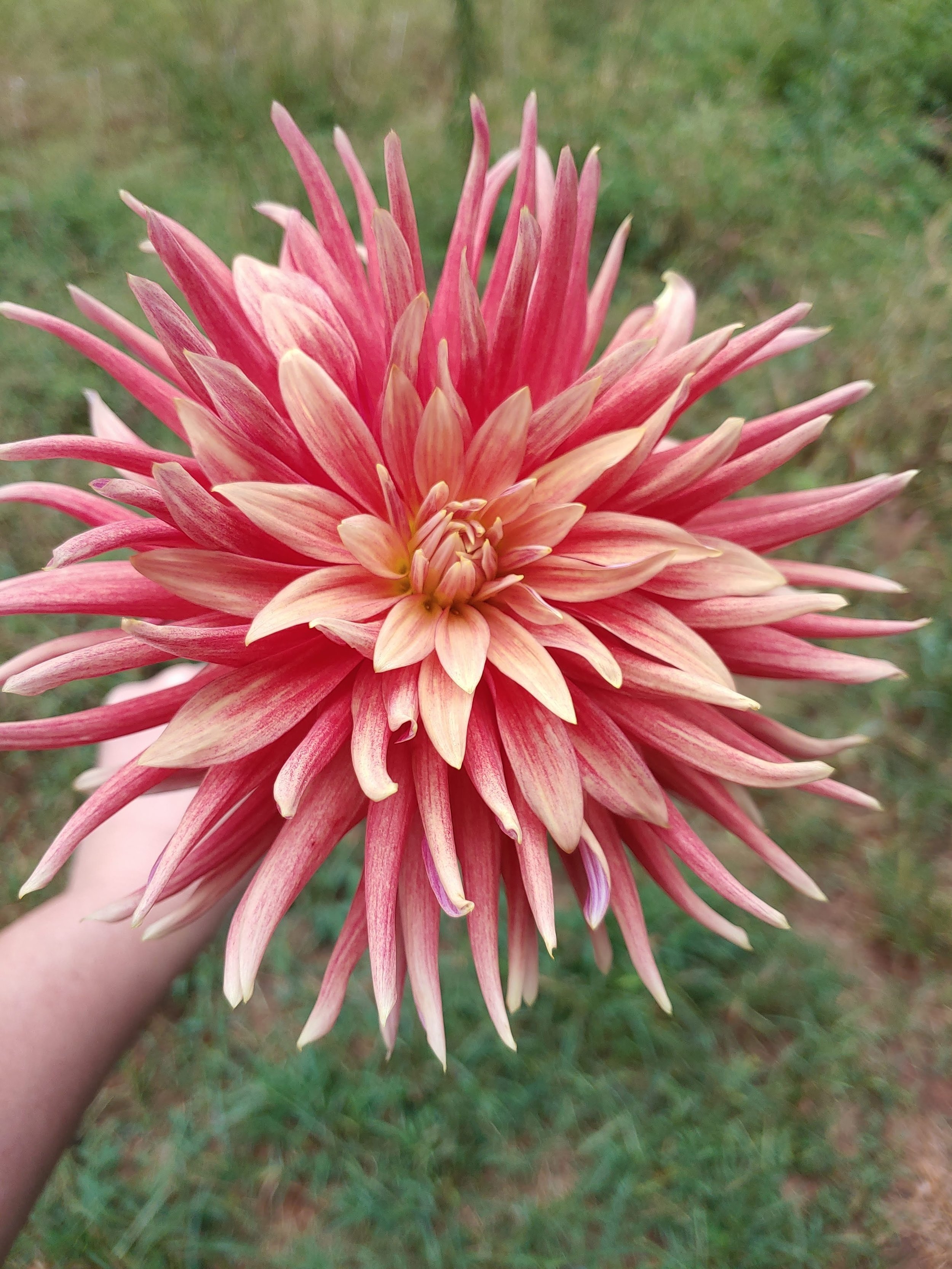
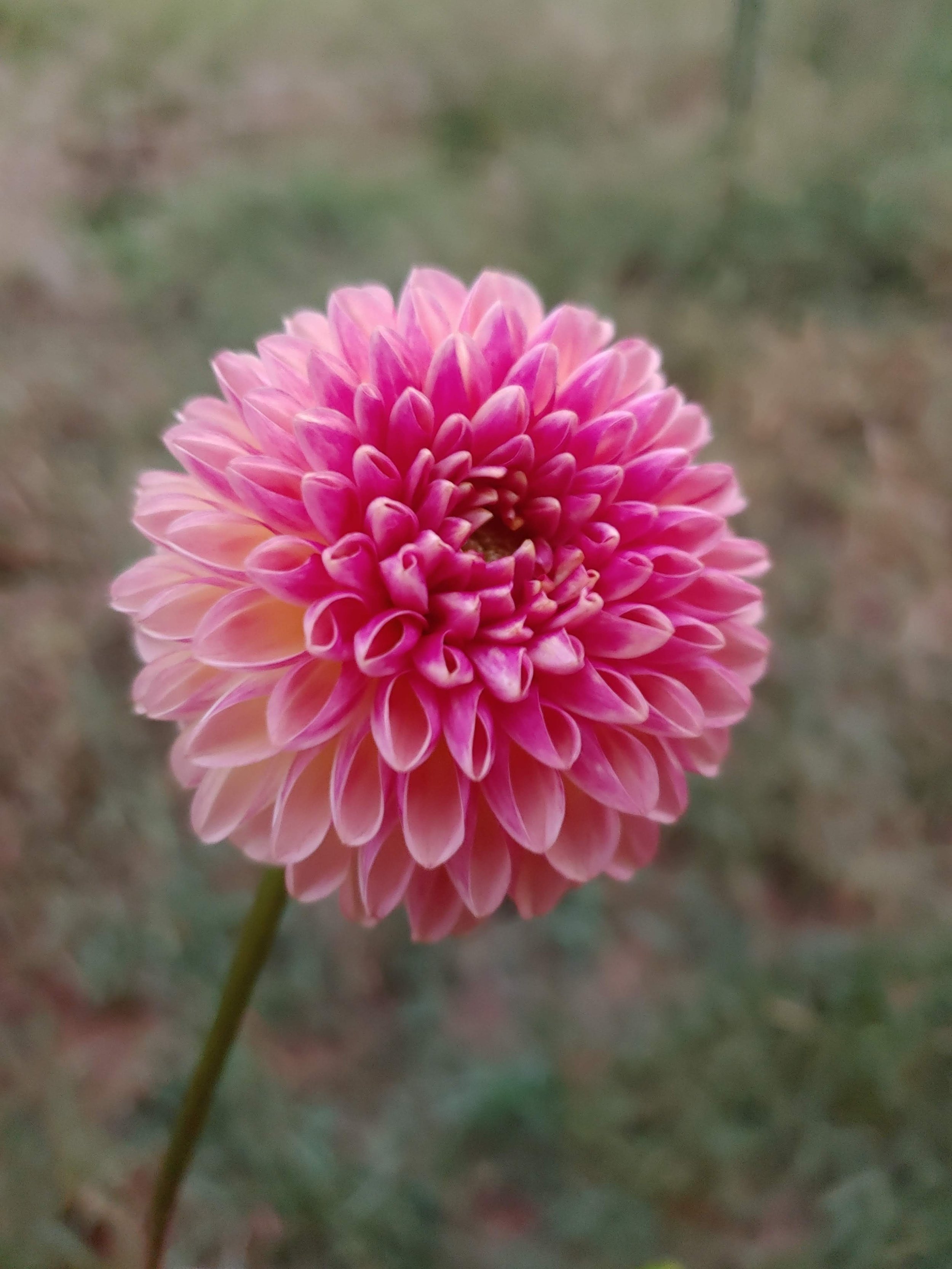
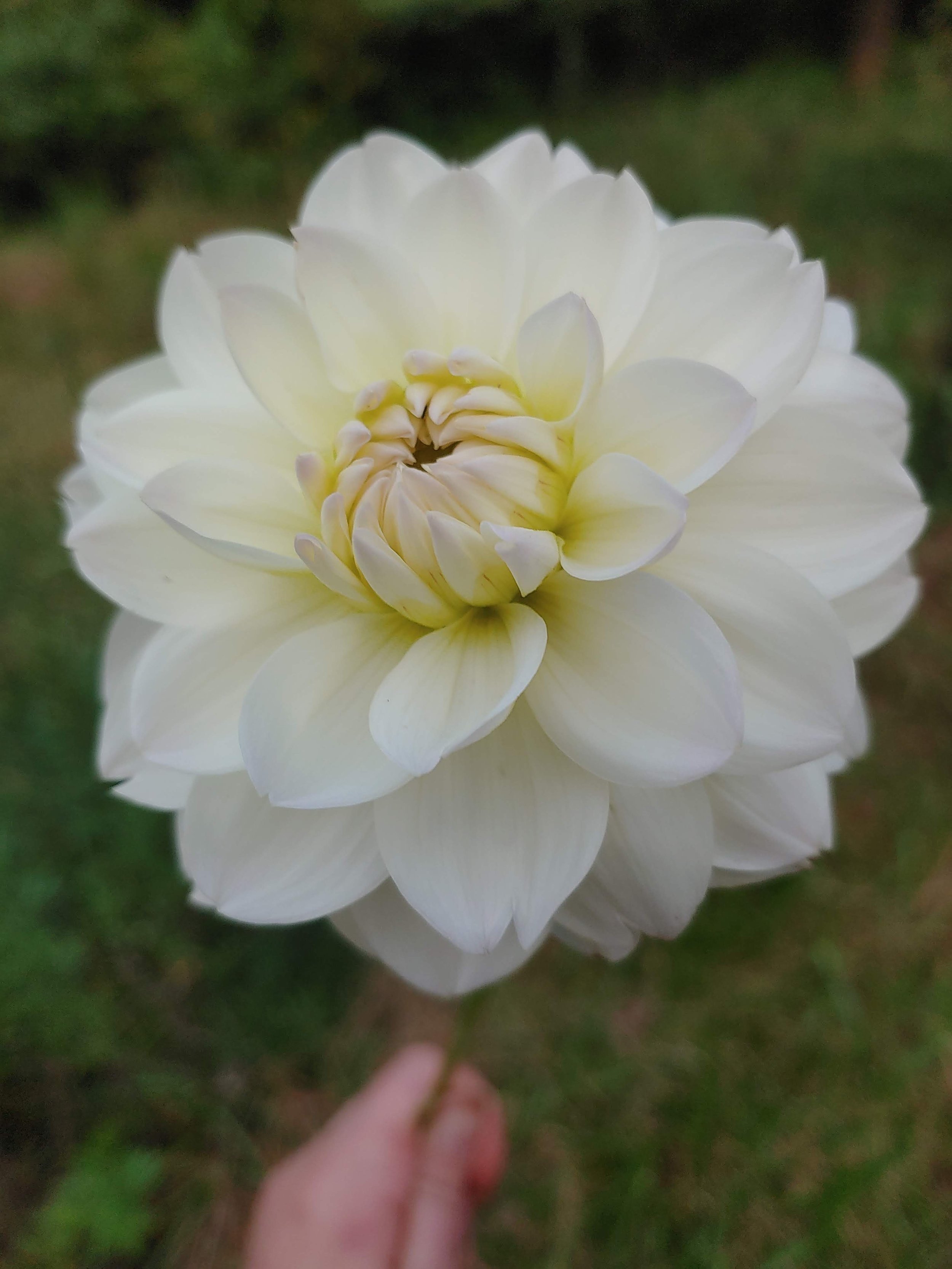
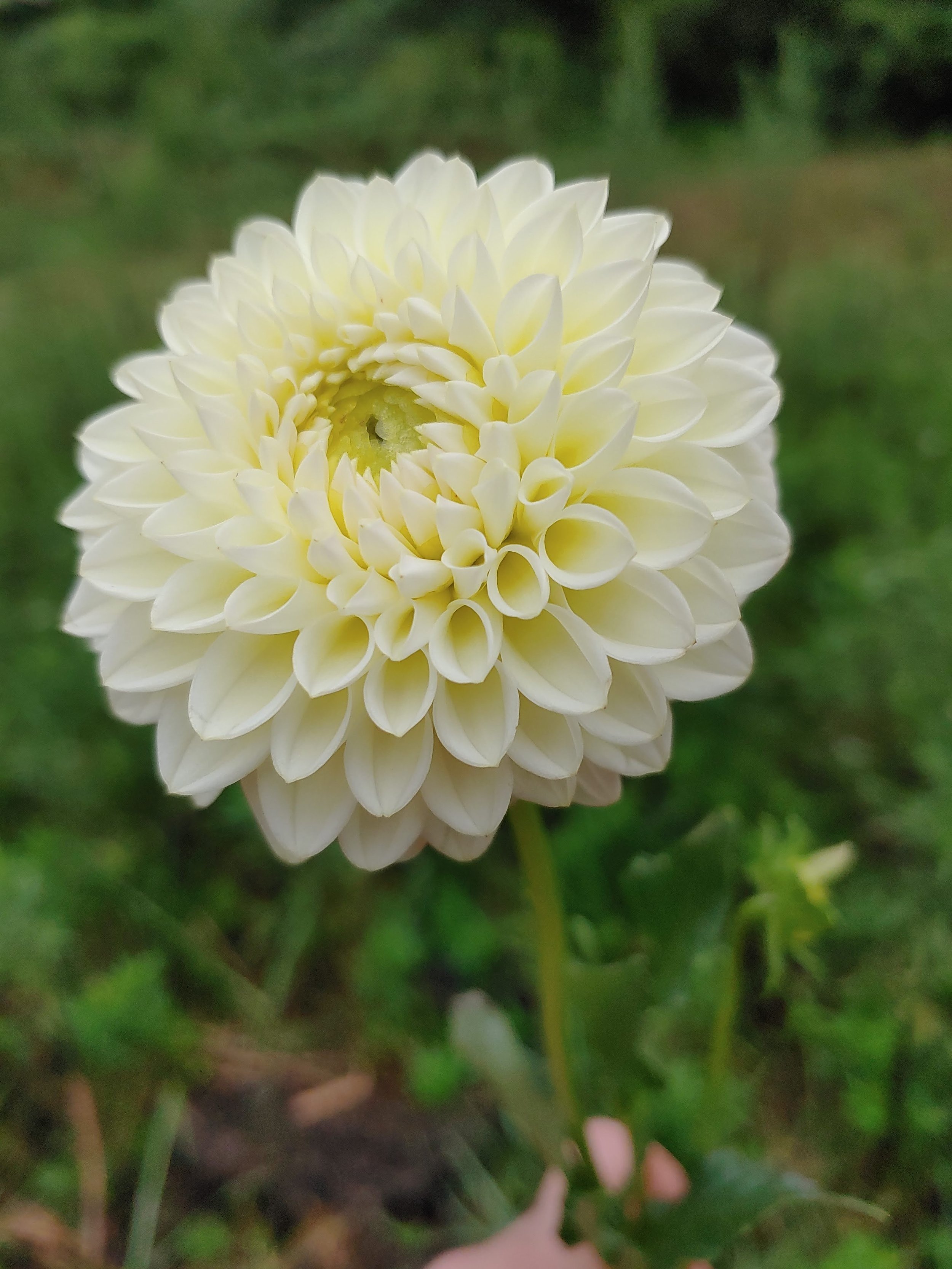
My favorite new dahlia has to be a tie between Coralie, Sugartown Sunrise, and Hapet Champagne. They are all fabulous!
Coralie- This dahlia has all the good stuff. Excellent color - mine came off muted because of the lower light intensity but I think it’s actually more beautiful that way. Good tuber maker, great plant habit- strong stems, not overly tall, threw off a nice flush of blooms at once. I was able to get 2 nice flushes off it, could probably get 3 in my climate with an earlier planting date. You’ll be seeing a lot more of this variety around here.
Sugartown Sunrise- Pale muted yellow with the occasional hint of peachy/pink- Yes Please! This dahlia is just adorably cute and I wouldn’t have it any other way. Good tuber maker too— I got 13 off of my one plant! Two flushes of blooms but longer flushes, a bit more of a steady producer instead of all at once. I’m going to field grow this one next year which I’m sure will intensify it’s color some but that’s ok— I don’t think it will hurt, she’s still going to be gorgeous!
Hapet Champagne- I’ve been wanting this one for years and she didn’t disappoint! I love frilly dahlias with lacinated edges. Her color can’t be beat- cream, pinky, peachy- total champagne goodness. Great tuber producer (9 off one plant), not a heavy bloomer but enough to be a keeper. I wouldn’t grow loads of this one b/c I know her style is not for everyone but you will see more of her next year!
Last Dance- I ordered this one on a whim because I was looking for more lavender dahlias. She’s really more of a white with lavender flush. But she’s a good producer- bloom and tuber (13 off one plant). Similar to Meagan Dean but Last Dance has a darker stem and foliage which makes for a beautiful plant/bloom combination. (these things are important if you grow dahlias for their beauty in your garden).
Hollyhill Finlandia- Another ‘on a whim’ purchase. This dahlia is a large dinnerplate size and a cactus type. Those 2 things don’t make for a good combo for my cut flower sales but they do make for great showpieces in your garden. So I allow for a few new big fancy types each year. There’s just nothing like a dinnerplate dahlia. Hollyhill dahlias are always well bred and I know I can count on them to be quality varieties with great blooms and good tubers. Finlandia followed suit with other Hollyhill dahlias I’ve grown.
Good Day- This is the beauty you saw me posting on Instagram— and most of you loved it!! I wouldn’t grow lots of this one because it’s size and coloring are not super popular in my cut flower business. But it lives up to it’s name— you can’t help but have a good day when you see it. It’s also very productive for a dinnerplate dahlia- I lost track of how many blooms I got but at least 8-10. Also it won the award for most tubers off a new variety- 21!!!
Coseytown Bounty- This is a new introduction by LeeAnn Huber of Coseytown Dahlias. Bounty couldn’t be more on trend if LeeAnn was a fortune teller— How did she know Bounty’s coloring would be so popular when she released it?!! It’s perfect in my climate— bronzy in warmer weather and then adds in a bit of rust as the weather cools— which is perfect b/c my wholesale customers ask for rust as the weather cools! Great production bloom wise and tuber wise! Definite keeper!!
Marshmallow- wasn’t looking for a new white but you can never have too much white! Marshmallow is very puffy and fluffy. A bit more of a steady bloomer rather than flushing. Strong stems, a bit taller plant habit than I like but still usable. I’ll definitely be keeping this one for a second year evaluation.
Winholme Diane- I tried this one 2 years ago but unfortunately my tubers rotted. But she’s so beautiful I had to try again. So glad I did! She’s a great muted yellow, sometimes can have a bit of pink. Long stems, decent (but not great) tuber production. Definitely going into my second year test evaluation.
To Cull:
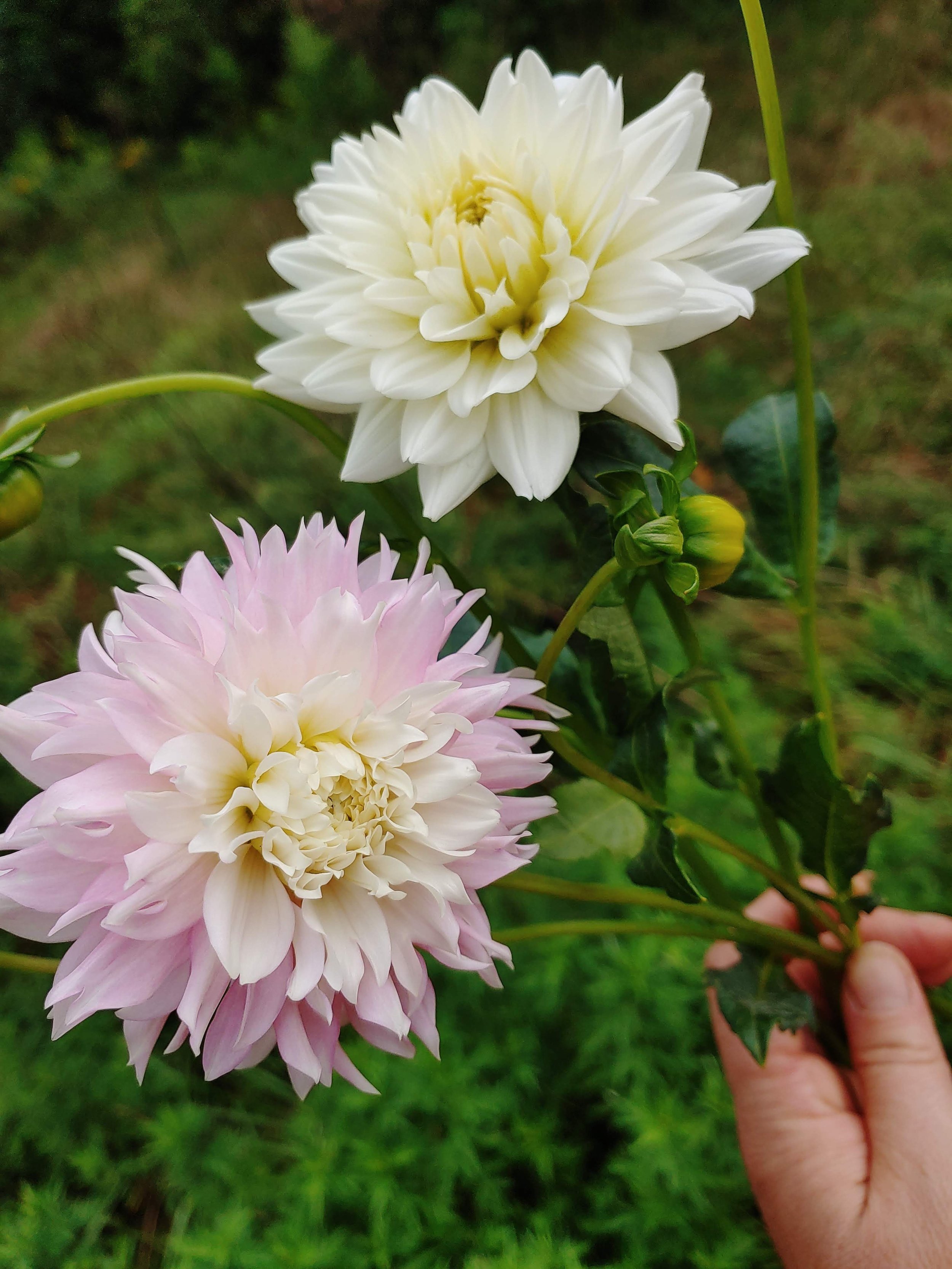
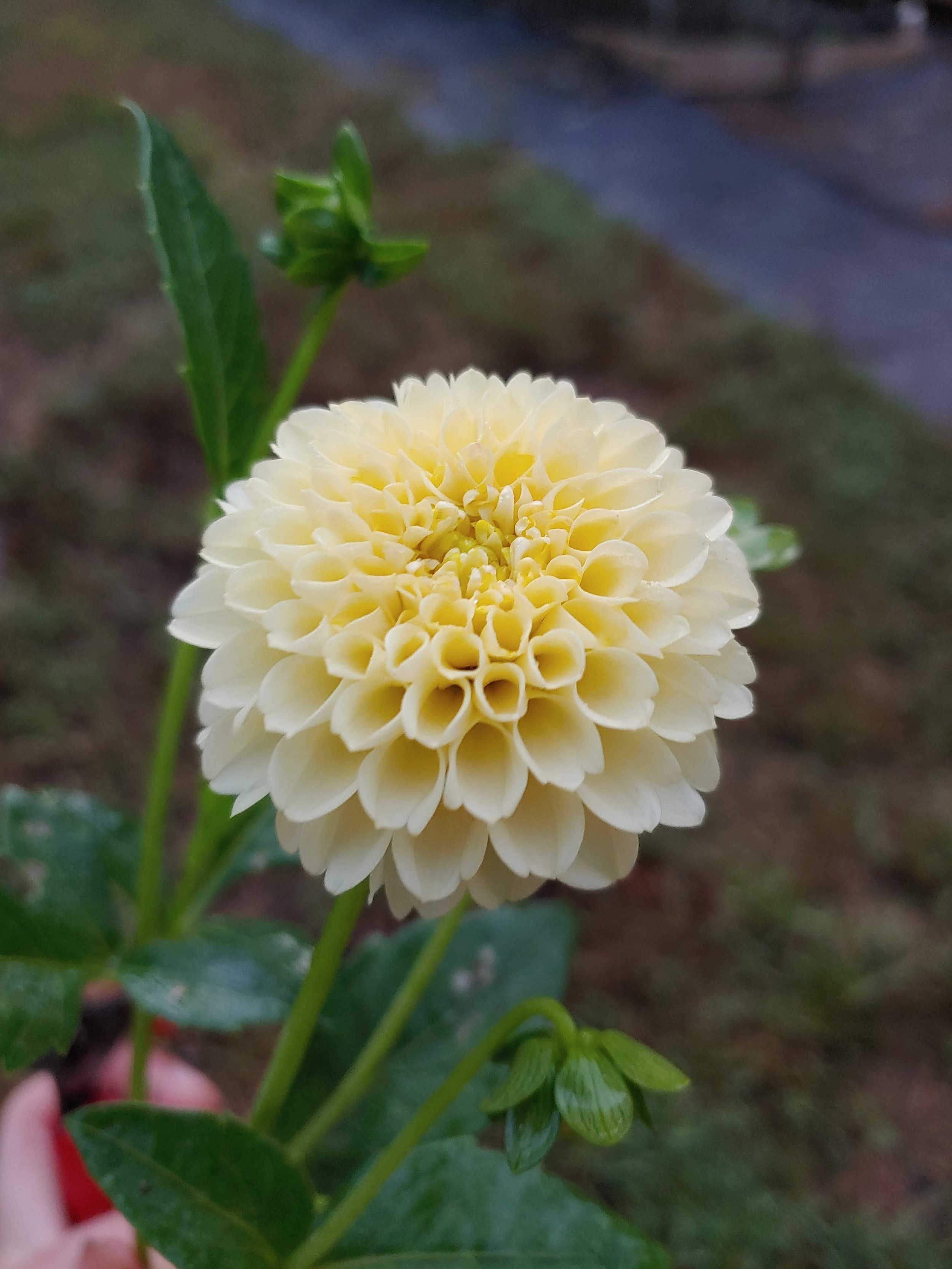
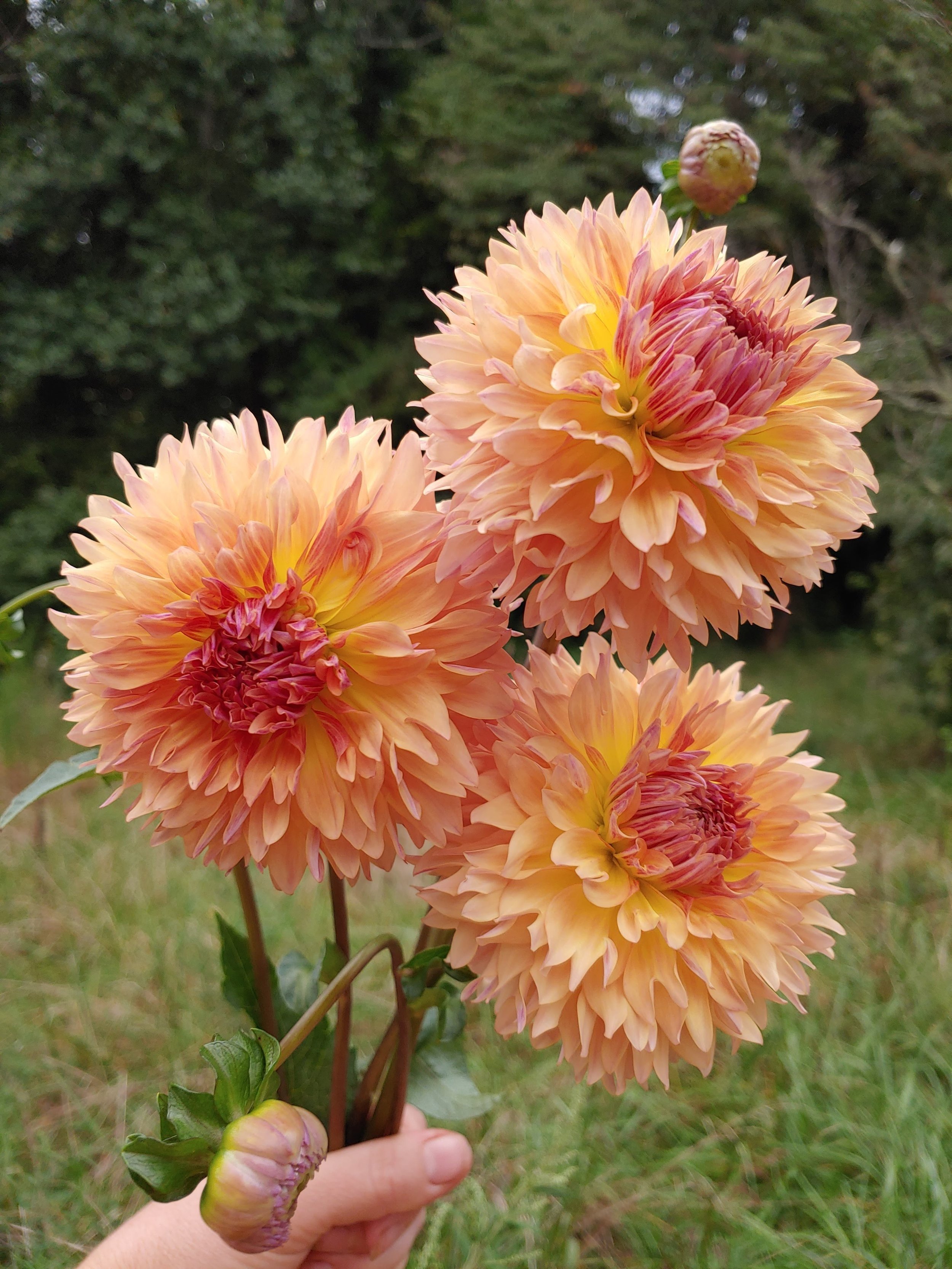
A lot of my test varieties will be kept for a second year. I try to grow something for 3 years before completely chunking it if it’s not working. So a large majority of this year’s varieties will be kept around. However I do have a few that I’ve been testing for a few years now that are getting the boot:
Chilson’s Pride- I really want to like this dahlia but the picture you see above is the only good bloom I’ve ever gotten out of it in 2 years. There are a lot of lt pink/white dahlias so I’m moving on. The plants are floppy, don’t bloom a lot, it’s just not working for me. I know this will be an unpopular opinion because a lot of people really love this one. (So if you have a secret to it- tell me quick!)
Moonstruck- I bought this a few years back in my quest for light yellow dahlias. But first off, it’s always been more cream than pale yellow - not necessarily a bad thing. But it also doesn’t tend to produce consistent bloom size- some will be small, some full size- also plants are floppy for me. Moving on… there are plenty of pale yellows out there.
Creamy- I know I know— You are probably saying— What??? This dahlia has become increasingly popular over the past few years. I was really excited to try it 3 years ago. But each year it has consistently underperformed. I’ve tried field grown and hoophouse- Inconsistent bloomer, weaker stems. Also I’m not a huge fan of smaller dahlias (this one is 1-1.5”) for cut flower production. So I’m letting it go.
Genova- Unfortunately I don’t have a picture of this one— that’s how inconsistent it’s bloom was. I think I’ve regularly gotten 1-2 blooms per plant for the 3 years I’ve grown it. It’s beautiful but that’s far from enough to earn it’s keep around here.
Gabrielle Marie- I actually use to grow a lot of this one because it’s an early bloomer and nice coloring. However, I think there are varieties that have better coloring- a bit more subtly to them. Gabrielle Marie comes off a bit more orange than peach in my hot climate. I’d recommend this more for cool climate growers. (Can’t find any pics of this one either unfortunately)
Karamel Korn- I really kinda hate to let this one go because it has amazing color but it can’t hold it’s form to save it’s life. I get 1-2 decent blooms and then it just starts throwing open centers and it’s not a pretty look for her. If you have a more stable climate that doesn’t go hot/cool/hot during the season or get sudden massive storms or long periods of dry, then it might perform well for you. (Do stable climates exist anywhere nowadays?)
There are a few others that are potentially on the choipping block but I haven’t decided yet:
Andrew Charles- Great dahlia but I don’t sell much of it’s color.
Mystique- Love the color but it had the most elastic floppy bendable stems ever.
Sebastian- Again, beautiful color but puny little plant
Miss Brandy- Great color combo but she’s kinda short. If I sold exclusively at farmer’s markets, I would grow loads of this one because she fits perfectly in a Fall harvest bouquet!
Soulman- beautiful color, one of the few burgundies I tried, threw lots of blooms but the singles don’t seem to form well in our hot climates. May give it a second year though.
So out of the 120 varieties, here’s who is on my definitely keep list (keep in mind that some of these are only first year trials so still could eventually get the boot)— but I feel confident about these for now:
Keep:
Coralie
Hapet Champagne
Sugartown Sunrise
Last Dance
Hollyhill Finlandia
Good Day
Coseytown Bounty
Winholme Diane
Polyventon Supreme
Beatrice
Brown Sugar
Caramel Antique
Diana's Memory
Pink Pearl
Rose Toscano
Sandia Brocade
Second Year evaluation varieties are those that show potential but I’m not sure about yet so they stay in trial mode for another year. Most likely some of these varieties will move to the cull list before spring. I need to narrow this down but I’m still working on it.
2nd Year Evaluation:
Blyton Softer Gleam
Bracken Rose
Bracken Sarah
Brookside Cheri
Dreamcatcher
Fiona
Formby Alpine
Danny Boy
Happy Hour
Hillcrest Jonathan
Hilltop Lost Treasure
Honeydew
Honeymoon
Isabel
Jabberbox
Jasmine Pearl
Just peachy
Lilac Bull
Mary's Jomanda
Mingus Toni
Narrows Brett
Narrows Pam
NTAC Mia Li
Tahoma Curve
Tahoma Surething
Touche
Wizard of Oz
Cull:
Creamy
Chilson’s Pride
Gabrielle Marie
Genova
Karamel Korn
Moonstruck
Cafe Au Lait (Just kidding— just wasn’t sure if anyone was still reading by this point!)
Now— that list obviously doesn’t add up to 120 varieties— there are some I’m still undecided on. Also, there were unfortunately about 40 dahlias that didn’t sprout (as in no live eye on the tuber). This is why it’s important to learn to recognize eyes on your tubers so you know when they arrive if you have a viable tuber or a dud. The unfortunate thing is that when ordering from small growers, you often can’t get a replacement, just a refund. But I’d still rather support small farms with my tuber dollars when I can!
Speaking of small farm tuber sales— You may be wondering if any of these will be available in our New Year’s Day sale. The short answer is Yes! About half of these produced a decent number of tubers so I will sell a few. There will be a limited category in the sale that will feature varieties that we don’t have many of but would still like to share with you. Also the cull varieties will be available. Remember, just because they didn’t work for me, doesn’t mean they don’t work for you. I talk to growers all the time who can’t stand a variety I love. Each growing environment is different and each grower has different ideas/goals so if you like it, try it.
Lastly, if you are local, I will be selling some rooted cuttings at our Spring Plant Sale in April. Rooted cuttings will not be available for shipping, local pick up only. My plan is to have some of the new varieties that I really love as rooted cuttings. I can make more plants this way rather than selling one tuber so more of you will get a chance to try out a fabulous new variety!
I’ll hopefully get to more in depth discussion on some of the other varieties that I’m keeping throughout the winter in 2022. I highly recommend conducting your own trials - home grower or commercial— Doesn’t Matter! It’s a great way to learn about dahlias, find great varieties for your environment and also just a great excuse to buy more!! Saying you’re buying it for your “dahlia trials” sounds better than feeding your addiction ;)
Dahlia Parade!
Do you remember the old Fred Astaire movie, Easter Parade? The namesake song where he strolls down the boulevard with all the ladies decked out in finery and flowery hats always reminds me of a garden full of big blousy dahlias.
Let’s have our own Easter Parade. A few weeks back, I asked you to send in pictures of your gorgeous blooms. I got some stunners so without further adieu:
Thank you so much for sharing your gorgeous pictures. Have you always wanted to grow dahlias like this? Give it a try for 2022! It’ll be the year of the dahlia. Our Dahlia Lovers Newsletter will teach you everything you need to know. Sign Up Here! Then go grab some tubers in our Pre-Sale going on now or in our Main Sale on New Years Day.

















